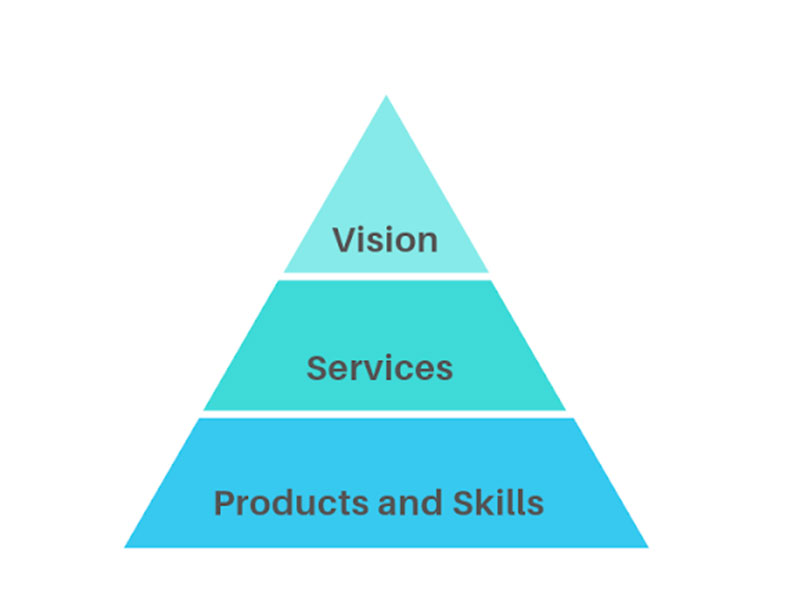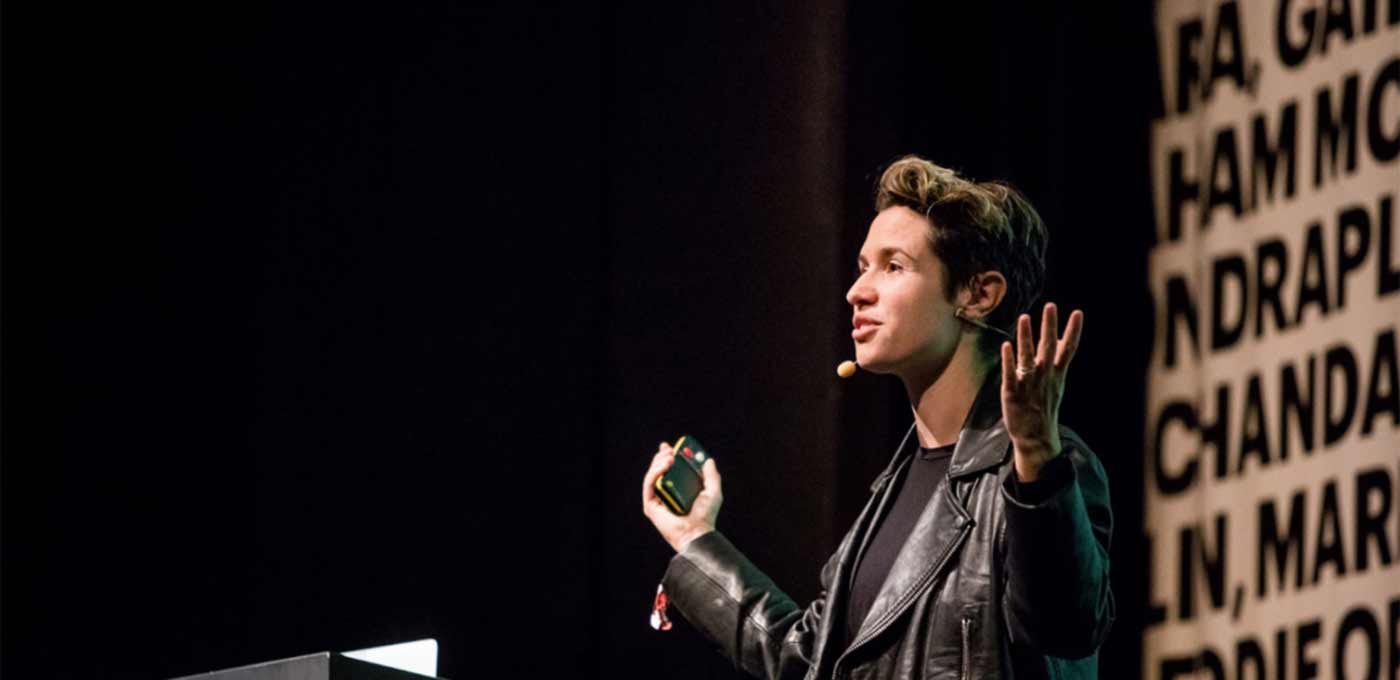We don’t innovate products or services – we innovate how they are delivered
People often talk in general terms about “products and services” in reference to what they offer their customers. In this short article we suggest that this distinction is incorrect, and even harmful to the ability to innovate how services are delivered.
We don't innovate products or services, we innovate how we deliver services to people.
What is the difference between products and services?
What’s a product? What’s a service?
Is a mobile app a product or a service? If we purchase a foodbox and it’s delivered to our home, is that a product or a service?
When we talk about products and services, we are talking about two ideas that exist on different levels of a hierarchy.

On the top of the hierarchy exists our organizational vision – the overall experiences we are trying to assist our customers towards.
Services exist in the middle as ‘acts of help’ that describe in a conceptual way the ways in which we are helping our customers achieve the vision, for example helping with transportation, communication, or facilitation.
Finally, our products and skills are how we embody services within actions and products that can actually be offered to our customers.
Here comes an example of what this would look like in practice:
Your vision might be “people are able to be where they need to be when they need to be there”.
The service you offer is personal transportation, which is the area they need help to reach the vision of being where they need to be (read: needs).
And finally, the product you might offer them is a scooter, or if you are offering skills perhaps a taxi service.
Making these distinctions is important because we are able to discern between the conceptual and the concrete. This has important consequences for how we are able to think about and practice innovating our service delivery.
A service is how we conceptually describe how we are helping our customers.
Can we offer a concept to a customer?
The true value of service is how it is embodied within our actions and products that we are able to help people towards desired experiences, in practical ways.
By making the distinction between products and services we are able to separate what we are helping people with, from how (in what form) you are offering to help them.
By stepping beyond the actions and products that you are offering, you can prevent them from clouding your potential for innovation as you get stuck in the present and forms of service that already exist.
This is the essence of the famous quote about faster horses (somewhat dubiously attributed to Henry Ford): “If I had asked people what they wanted, they would have said faster horses”. The horses embody the service and thing you are helping with, transportation. There is limited scope in our ability to innovate a horse. Rather if you are looking for change, you seek to innovate how transportation is offered to people – whether this is by a car, electric scooter, or when the technology arises, possibly, a futuristic magnetic levitating transport pod.
The trap of focusing too hard on existing skills or products is that you can easily become trapped in a cycle of incremental change and improvements
Why is this distinction important for our ability to innovate?
Innovation when it's reduced down it can be looked at simply as the process of doing things differently.
When you try to innovate on the level of our products and skills you can limit your scope of possibility and only see through the lens of improvement – rather than inspiration or radical shifts in how our service could be delivered.
By bringing your attention to the level of people's needs through service design approaches, you are much better placed to determine the services they require. And from the level of service, there exists an unlimited world of different possibilities.
When you understand the needs you are addressing, you are able to identify the services that customers require. From here you have a much better foundation from which your service delivery can be built and innovated.
So what now?
So what we are proposing is a frameshift in the way that we all understand and communicate products, skills and services.
We are proposing to shift services up the hierarchy to where they belong, and from this point focus on how those services could be embodied in transformational actions and novel products that will have a positive impact on the way you help our customers.
Summary
When we talk about products and services we confuse ideas on different levels of a hierarchy. Products are aspects of how we embody services, where services are conceptual ways we describe what you are helping customers with.
A more accurate way of describing what an organization offers is through products and skills that embody and help deliver services to customers. By making these distinctions we are able to more accurately think about services for the purposes of innovation and service delivery improvement.











